
Indoor signs
3/2/2020
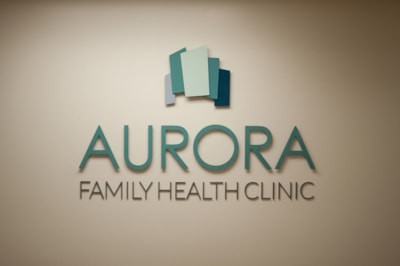
Medical centers are a beehive of motion and traffic from staff, patients and visitors. Hospitals, healthcare clinics, nursing homes and assisted living centers all stand to benefit from attractive, informative signage that enhances the experience long before any appointments begin.
As you probably know, healthcare is changing – new service providers, technology, specialists and coverage plans are just a few of the modifications that are redrawing the industry. And while the internet is an incredible resource for learning specifics and selecting doctors, it’s not much help to visitors looking for a specific office. Signage can show the way, letting visitors and staff navigate the maze of corridors and options within today’s growing health facilities. We’re going to take a closer look at sign strategies and design advancements that, with some insight and planning, can impact not only the quality of services at a modern healthcare organization, but shape the overall impression it creates on everyone there.
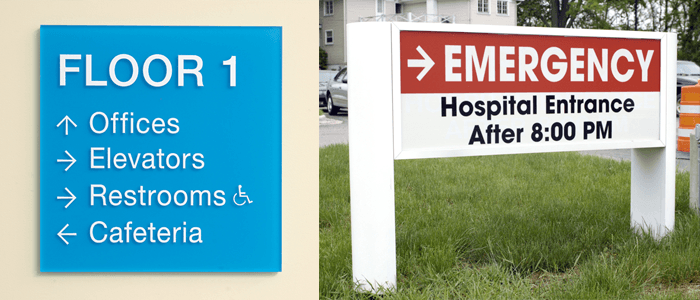
Could you imagine if you walked into a storage room of biohazard chemicals because there was no sign? When a healthcare facility needs to inform visitors, employees and patients on what to do in case of emergencies, where rooms are or what a certain department is, they rely on signs that draw attention and communicate clearly.
Wayfinding refers to the directories, maps, signage, symbols and visual cues that guide people through a building or campus and enhance their experience as they walk (or drive) to their destinations. Whether used outdoors or inside, wayfinding signage within a healthcare environment enables people to find offices and other sites easily during a potentially stressful time; whereas poorly thought-out or non-existing directional signs can lead to missteps and frustration.
Healthcare signs that communicate important information are probably the most useful in a hospital setting. However, other facilities that offer new or expanded services can benefit from clear signage. As new services are added, new signage is a must, helping patients learn about new capabilities and where to find them. For office staff, gradual changes are easy to get used to, but new patients can feel lost if left unguided as they wonder several new departments. Planning a sign strategy that helps everyone get around a renovated hallway shouldn’t be an afterthought.
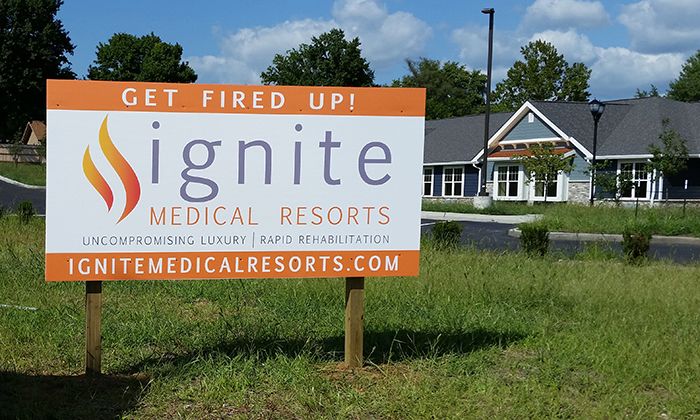
While signs guide actions, they also steer opinions. Signs convey an image about a community, healthcare facility, the staff and even an individual department. If they’re effective, they’ll create a strong first impression of reliability and professionalism. Of course, signage isn’t foremost on patients’ minds, but it’s an aspect of the overall impression a practice can create at the subconscious level.
Any exterior signage - street-side or close to a facility - will get the most views and is where the brand-building begins. Next, attractive hospital lobby signs and medical reception displays can welcome all visitors and introduce the wayfinding process. Any design factor that goes into a brand needs to be maintained throughout the facility and complement the décor while providing consistent messaging and terminology that always puts safety, efficiency and clarity first.
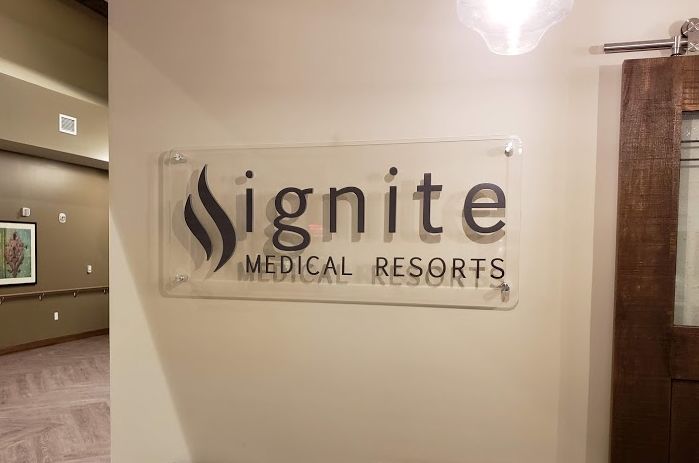
Good signage incorporates design elements that will help it stand out – color contrast, changeable components, motion, uniqueness of design and placement can serve to make a sign more noticeable. Signage should be organized to convey its intended message, using the same key words and phrases throughout a facility. On a smaller scale, custom-framed artwork, one-of-kind displays, door plaques and engraved nameplates can enhance the décor and lend a professional appearance everywhere visitors may go. Keep in mind that the more someone expects to learn from a sign, the more weight it will carry in creating a lasting impression.
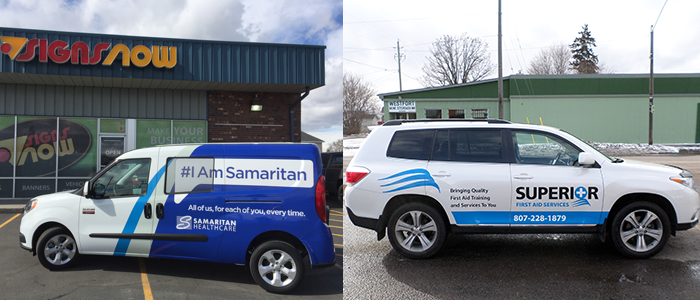
A health care facility that relies on vehicles could be missing out on the perfect marketing opportunity within their community. Custom vehicle graphics and lettering blow the doors off traditional advertising strategies by converting vehicles into moving billboards, turning heads and raising awareness everywhere they go. Plus, vehicle graphics and decals are one of the most cost-effective methods of advertising, averaging 48 cents per thousand impressions, a fraction of the cost of other advertising media. (source)
High-quality graphics, high-def image reproduction and vinyl lettering (all in line with a brand style) can connect with people and even generate some local buzz. Design ideas can range from bold to subtle, promoting a website and contact details on a single car or van or highlighting logos, advertising images and social media handles on an entire fleet. Digitally prepared images, lettering and logos are razor sharp and durable, potentially lasting years with minimal maintenance. When the time comes to replace or revise a vinyl sign, they can be removed without leaving behind marks or residue.
Vehicle graphics can also serve a variety of practical and management purposes, such as loading procedures, tracking numbers and specific health-service messages. Cars, vans and trucks with an easy-to-read (or scan) tracking ID help healthcare practices stay organized and run efficiently, offering a quick ROI, not to mention a very impressive appearance on the road.
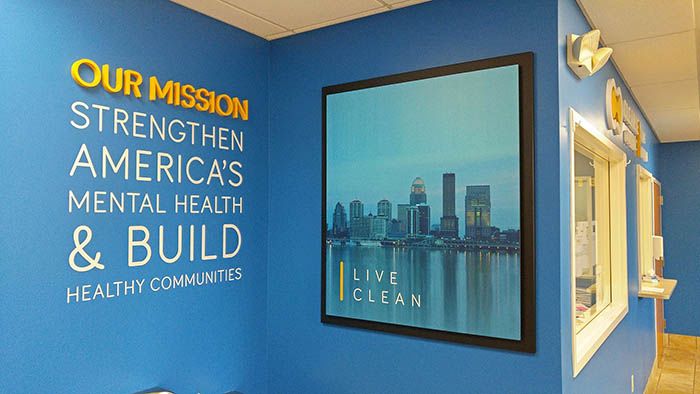
Wall space doesn’t have to be limited to signage and a fresh coat of paint. Savvy organizations are using walls, ceiling and floors to set a mood. Professionally produced custom graphics can transform a space into an experience, giving patients something to enjoy and staff an atmosphere that inspires. Why let wall space go to waste – there are many new materials and techniques to create affordable graphics, even murals that carry a theme or message through a medical facility or even individual offices. Lighten the mood with clever graphics on the ceiling or themed messages on the floor.
Healthcare practitioners can make their jobs easier by using displays to educate patients about health in general or explain their newest technology. It’s easy to imagine kids marveling over a ten-foot tall image of an eyeball at an ophthalmologist’s office. With more and more patients getting interested in the care they need and who delivers it, opportunities to educate and enlighten can be helpful to everyone.
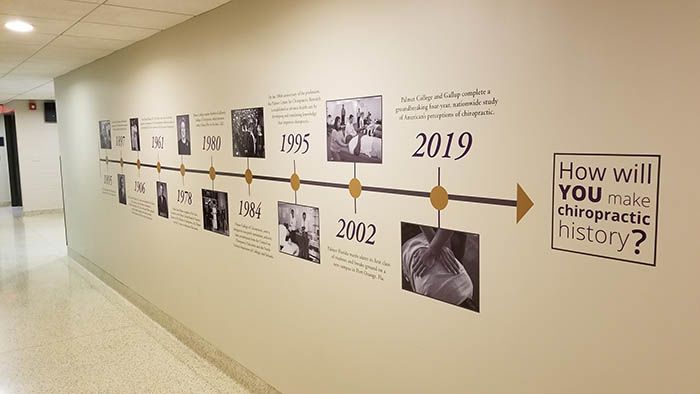
Other trendy large-format graphics to consider:
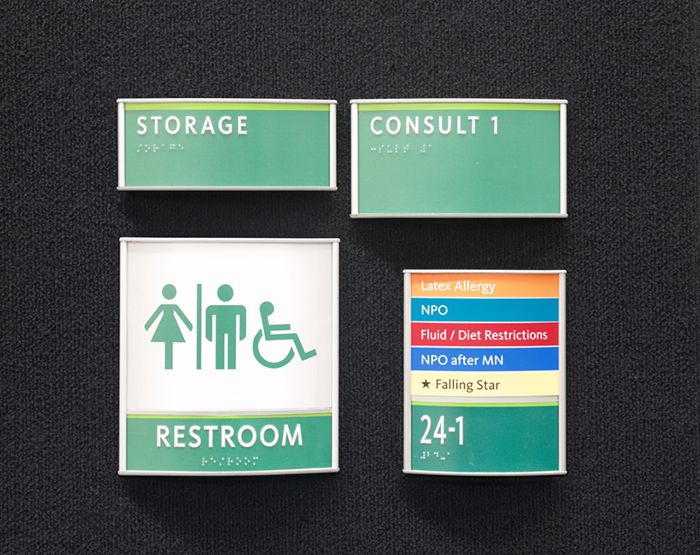
Regulation-based ADA signage is mandatory for businesses to comply with the Americans with Disabilities Act. And while there are strict guidelines, a sign designer does have flexibility to go well past a typical engraved plastic sign while remaining in ADA compliance.
Backed by experience and knowledge, a hospital can make some compromises without sacrificing their brand entirely. That’s why it’s important to select designers and fabricators who know the latest rules and directives, and better yet know what changes are in the discussion stage, so they can suggest preemptive ADA-signage strategies. Many ADA requirements define font size, Braille font and signage size and locations, leaving plenty of room for a brand’s style to show through. Look before you leap – assuming or neglecting details can risk failing an ADA inspection and the high cost and hassle of redoing all that new signage. Ask a design team for samples, case histories and their experiences working with ADA inspectors.
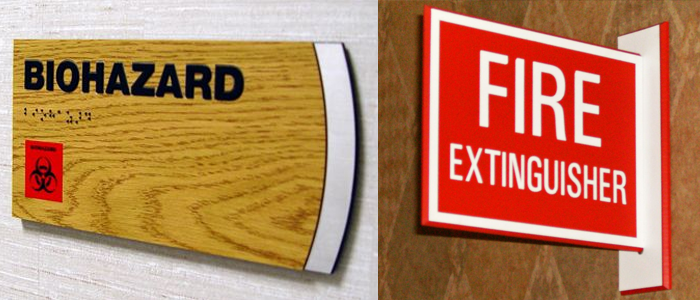
Building safety measures continue to grow in complexity, often challenging patients and other guests who are expecting immediate attention. We can’t downplay the need for security at hospitals and other large facilities, so the impact of signage can be a big part of the process and the solution. Clear warnings and instructions at entrances help security staff screen visitors faster. For automated measures, signage can help cars and pedestrians prepare for various security steps and help eliminate confusion. Signs should be designed and tested before installation, then placed at key points along the way, repeating and reinforcing each other, when necessary. Inside, safety signage can advise visitors of any additional measures and thank them for their understanding. Off-limits areas, keycard doorways, hazmat warnings and ADA signage can help people get to where they need to be and take the pressure off office staff to watch over people entering and exiting.
These are just a few of the major advantages of a well-planned sign strategy that healthcare office managers and administrators should consider. Look for future articles and blogs for other insights. For inquiries, you’re welcome to contact Signs Now Plymouth at (763) 746-0020.